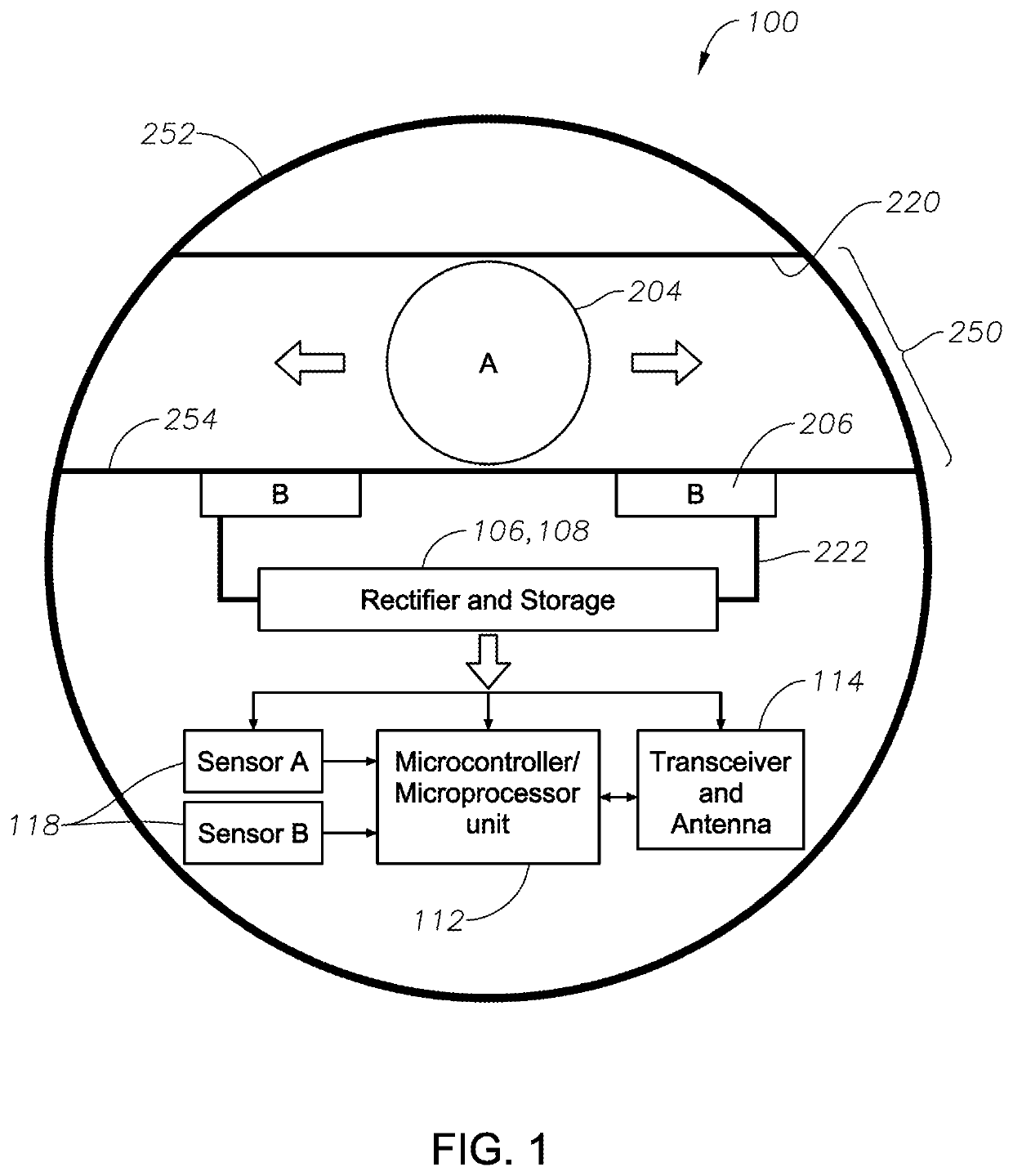Self-powered miniature mobile sensing device
a mobile sensing device and self-powered technology, applied in piezoelectric/electrostrictive/magnetostrictive devices, electrical apparatus, surveys, etc., can solve the problems of wireline logging, wireline logging tool stuck, and add to the cost of drilling a well, so as to achieve less power to operate and not easily replicable
- Summary
- Abstract
- Description
- Claims
- Application Information
AI Technical Summary
Benefits of technology
Problems solved by technology
Method used
Image
Examples
Embodiment Construction
[0024]The methods and systems of the present disclosure will now be described more fully hereinafter with reference to the accompanying drawings in which embodiments are shown. The methods and systems of the present disclosure may be in many different forms and should not be construed as limited to the illustrated embodiments set forth herein; rather, these embodiments are provided so that this disclosure will be thorough and complete, and will fully convey its scope to those skilled in the art. The term “high temperature” as referred to herein refers to temperatures above 125° C. unless otherwise noted.
[0025]Turning now to the figures, FIG. 1 illustrates a smart miniature mobile sensing device (MMSD) 100 with a power generator 250, integrated sensors 118, microcontroller / microprocessor 112 and a communication module 114 that can be injected into wells to evaluate, characterize downhole environments as well as control downhole equipment. These MMSDs have the ability to perform the s...
PUM
 Login to View More
Login to View More Abstract
Description
Claims
Application Information
 Login to View More
Login to View More - R&D
- Intellectual Property
- Life Sciences
- Materials
- Tech Scout
- Unparalleled Data Quality
- Higher Quality Content
- 60% Fewer Hallucinations
Browse by: Latest US Patents, China's latest patents, Technical Efficacy Thesaurus, Application Domain, Technology Topic, Popular Technical Reports.
© 2025 PatSnap. All rights reserved.Legal|Privacy policy|Modern Slavery Act Transparency Statement|Sitemap|About US| Contact US: help@patsnap.com



